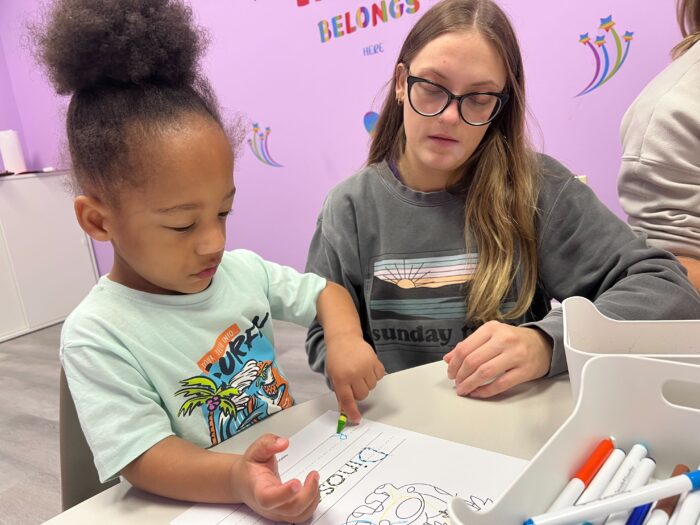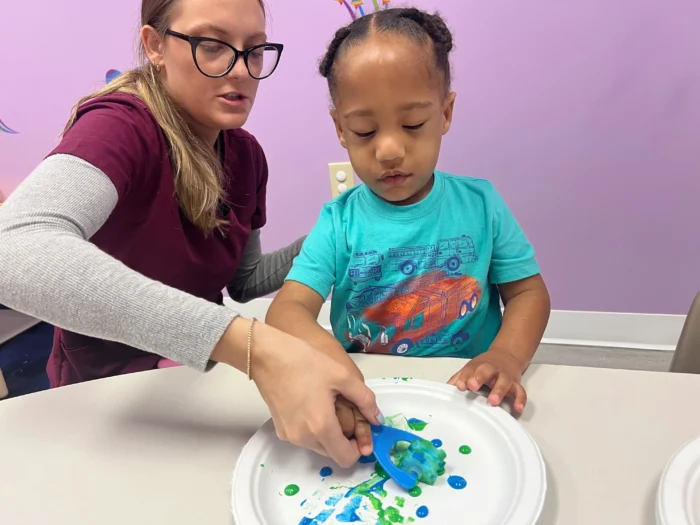
Play is a fundamental part of every child’s growth. Through play, children learn to communicate, share ideas, express feelings, and understand others — not just through words but through actions and expressions. Play also allows children to develop interests that may become future careers or hobbies. The best part? Families can enjoy these activities together.
Here’s a list of 20 fun activities for kids with autism, all designed to support development while creating meaningful family moments.
Let’s play!
Great Activities for Autistic Kids & Families to Enjoy at Home
From calm, focused activities to energetic games that get their feet moving, there’s something here to brighten every child’s day. These autism-friendly activities are designed to spark joy, build confidence, and make everyday play both fun and meaningful.
1. Balancing Beam
Create a beam using tape on the floor or a wooden plank. This game encourages focus, balance, and motor coordination; all while offering a fun physical challenge.
2. Shadow Puppet Theater
Using cut-out puppets and a flashlight, children can bring their own stories to life. This playful blend of art and storytelling builds creativity and encourages language development. This is perfect for winding down during indoor evenings.
3. Water Play Station
Set up a water play station filled with various containers with water, funnels, or floating toys for sensory-rich fun. Water play can have a calming effect and support fine motor skills through scooping, pouring, and splashing – ideal summer activities for children with autism.
4. Music Jam Session
Explore rhythm and sound using everyday household items.
Music offers a dynamic way for children to express themselves and enriches their sensory experiences. This is especially beneficial for those who are nonverbal. A music jam session is a fun way to express their musical creativity, whether solo or with a family band.
5. Gardening
Simple gardening tasks, like planting seeds or watering flowers, offer lessons in responsibility, patience, and the natural world. This also teaches your child about life cycles and responsibility.
6. Create a Sensory Box
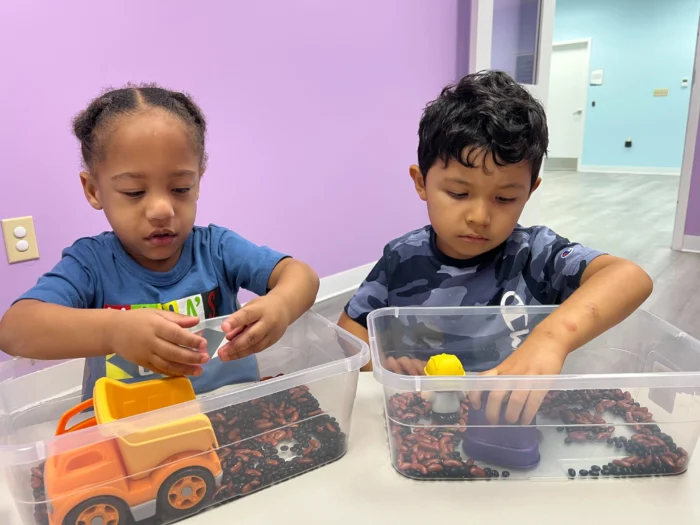
Fill a box with tactile objects such as rice, fabric, sponges, or beads. This is a great way to provide sensory input, especially for children who seek calming or stimulating textures, all while in the safety of home.
Sensory activities for kids with low-functioning autism are especially beneficial because they provide them with a gentle yet engaging way to interact with their surroundings.
7. Personalized Puzzles
Turn family photos or illustrations from your child’s favorite books into puzzles. Laminate these images, then cut them into pieces. This activity strengthens visual processing and memory while adding a familiar, comforting touch.
They can also make explaining autism to kids clearer by creating a connection to familiar and positive images.
8. DIY Light Box
Make a DIY light box to give transparent and translucent objects a soft, captivating glow. This creative project is an ideal component of indoor activities for an autistic child, as it improves visual focus and discrimination while also turning simple objects into a source of wonder.
9. Themed Treasure Hunts
Set off on an adventure right at home with themed treasure hunts, whether inside or outside.
These hunts can infuse your day with excitement and a bit of mystery. Use everyday items as hidden gems and visual cues for guidance, and make sure the themes are appropriate for your child’s interests.
10. Balloon Tennis
Play a lively game of balloon tennis with simple paddles. This game promotes active play, coordination, and healthy turn-taking. It’s a flexible and inclusive group activity that works well for kids with autism.
11. Recyclable Creations
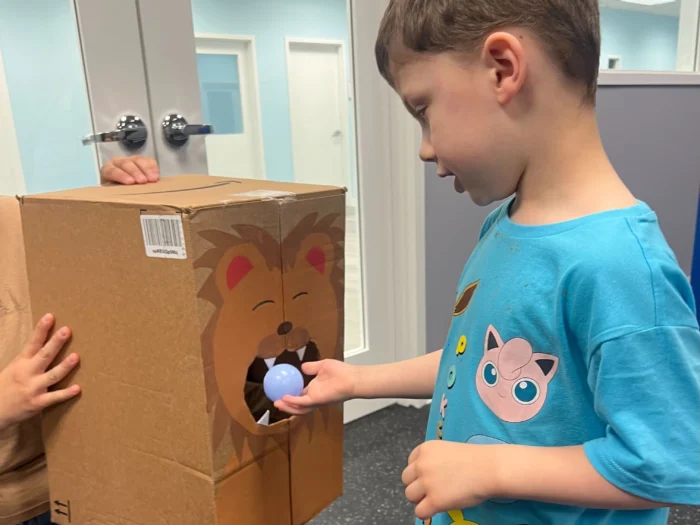
Using cardboard boxes, tubes, or containers, children can build forts, vehicles, or their own inventions.
This is one of the best activities for kids with autism who enjoy hands-on projects because cardboard creations can range from simple structures to massive forts. A practical and fun lesson in sustainability.
12. Bubble Wrap Path
Transform your floor into a sensory adventure!
Lay down a bubble wrap “runway” and let the popping fun begin. A sensory-rich experience that blends sound, texture, and movement. Every step and hop results in satisfying pops, which makes this a hit for children who love tactile and auditory feedback.
13. Nature Collages
On your next walk, gather twigs, leaves, and flowers to create beautiful, nature-inspired collages. This peaceful activity encourages children to connect with the natural world and allows for artistic expression.
Making collages can be a serene solo task during a quiet afternoon or a shared group activity, ideal for fostering teamwork and appreciation for nature’s beauty.
14. Interactive Reading Nook

Another one of indoor activities for an autistic child that’s very easy to prepare. Set up a special corner filled with picture books and related toys that bring stories to life through touch and sight.
This cozy spot turns reading into a multi-sensory experience that encourages imagination and comprehension.
15. Story Cubes
Transform cardboard cubes into engines of imagination by decorating each side with images of characters, scenes, and actions.
Tossing these cubes to make up new stories strengthens creativity, language skills, and family bonds. It’s a playful way to boost language and storytelling skills.
16. Sensory Walks
One of the best daily activities for an autistic child is a relaxing sensory stroll.
Take your child on sensory walks in the garden, the park, or through different rooms at home, paying attention to the various textures, colors, and smells.
This sensory play activity that deepens their connection to the environment and encourages thoughtful exploration and interaction with their surroundings.
17. Miniature Worlds
Invite your kid to create detailed miniature worlds within shoeboxes or small garden spaces.
Whether it’s a fairy garden or a dinosaur habitat, this activity combines fine motor skills with imaginative storytelling. It’s beneficial for both individual and group activities, as it allows for shared stories and creations.
18. Simple Cooking Projects
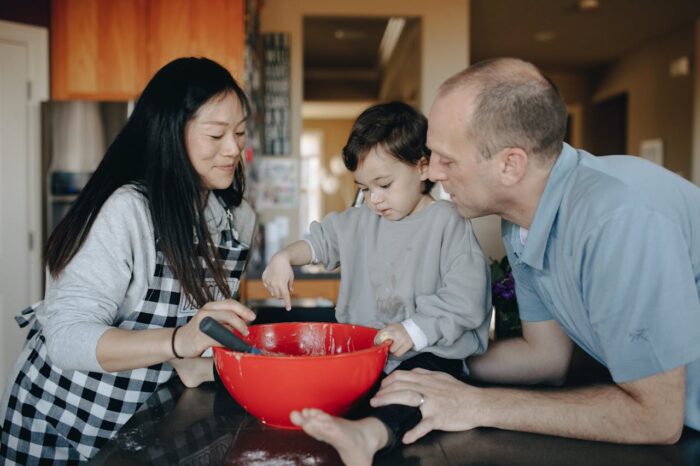
Share the joy of cooking by involving your child in preparing simple meals, like no-bake treats or creative sandwiches.
This shared activity teaches valuable life skills while also providing a sensory playground of textures and flavors. When they successfully prepare something tasty, it can boost their confidence and provide a sense of accomplishment.
19. DIY Obstacle Course

Boost your child’s love for movement by creating obstacle courses that match their abilities and spark their curiosity. Set up soft cushions, tunnels, and cones for them to crawl, leap, and zigzag.
This fun challenge helps children with spatial awareness, problem-solving, and motor skills.
20. Role-Playing with Puppets or Costumes
Role-play scenarios with costumes or puppets can help children learn about different social situations and emotions.
This type of creative play is an essential component of developing social skills, as it allows practice and understanding of complex social dynamics and emotional expressions in a relatable manner.
How to Choose the Right Activities
Children with autism exhibit different learning styles, so it’s important to adapt play to each child’s specific needs and preferences.
Here are some factors to consider when selecting activities:
- Start with what inspires them. Whether it’s dinosaurs, space, or music, adapting activities to a child’s interests increases engagement and joy.
- Incorporate visual aids. Visual cues can simplify the understanding and execution of tasks, especially for visual learners.
- Choose activities that play to their strengths. If they excel at puzzles, consider complex building sets or coloring books. Also, pay attention to their sensory preferences.
- Keep instructions simple and direct. Break down tasks into manageable steps to avoid overwhelming the child and encourage independence.
Final Thoughts
Play is more than just fun, it’s foundational to growth. Whether it’s a quiet sensory box or an elaborate obstacle course, each activity is a chance for your child to learn, express, and connect.
At Abacus Therapies, we believe in meeting each child where they are — and helping them grow with love, support, and curiosity. If you’d like more ideas or want help personalizing a plan, our team is here to support you.
FAQs
What activities are good for children with autism?
Children with autism often find joy and calm in structured activities that blend routine with exploration and creativity. Puzzles captivate with their complex elements, sensory bins filled with rice or water beads soothe with their textures, and arts and crafts provide freedom for self-expression.
What keeps an autistic child busy?
Aligning activities with passions and strengths keeps autistic children deeply engaged. For instance, mechanically inclined kids can immerse themselves in assembling LEGOs or other building toys. Educational games that make learning interactive spark both fun and development, especially in areas like language and problem-solving.
What things are good for autistic children?
A predictable routine, sensory-friendly toys, and items like weighted blankets and noise-canceling headphones can help children with autism meet their needs for consistency and balance. Visual aids such as picture schedules also make daily tasks easier.
What are ADL activities for autism?
Activities of Daily Living (ADLs) for children with autism are practical tasks aimed at building independence in personal care and daily chores. These might include dressing oneself using Velcro-fastened clothing, brushing teeth with a step-by-step visual guide, or participating in meal preparation with simple tasks like washing vegetables.

